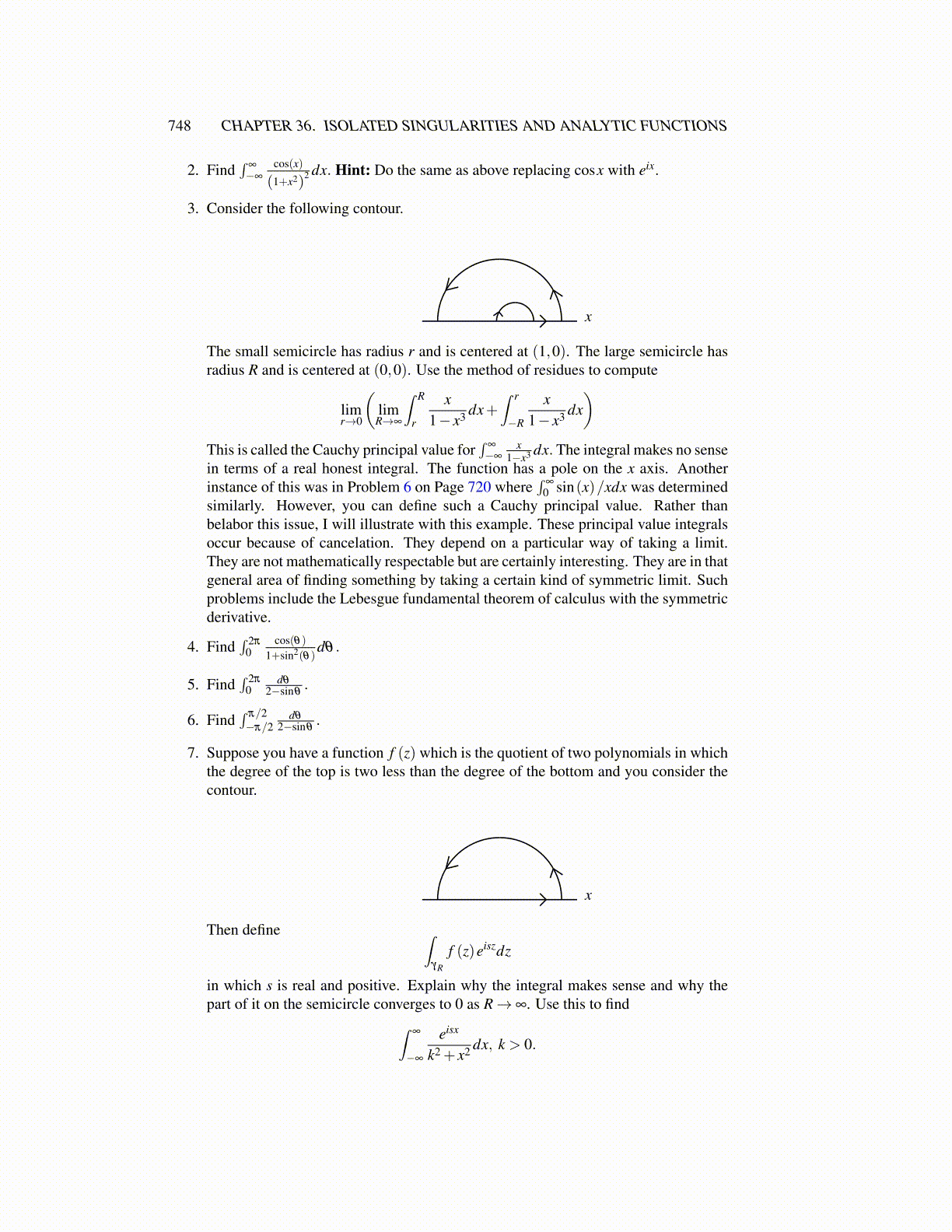
748 CHAPTER 36. ISOLATED SINGULARITIES AND ANALYTIC FUNCTIONS
2. Find∫
∞
−∞
cos(x)
(1+x2)2 dx. Hint: Do the same as above replacing cosx with eix.
3. Consider the following contour.
x
The small semicircle has radius r and is centered at (1,0). The large semicircle hasradius R and is centered at (0,0). Use the method of residues to compute
limr→0
(lim
R→∞
∫ R
r
x1− x3 dx+
∫ r
−R
x1− x3 dx
)This is called the Cauchy principal value for
∫∞
−∞
x1−x3 dx. The integral makes no sense
in terms of a real honest integral. The function has a pole on the x axis. Anotherinstance of this was in Problem 6 on Page 720 where
∫∞
0 sin(x)/xdx was determinedsimilarly. However, you can define such a Cauchy principal value. Rather thanbelabor this issue, I will illustrate with this example. These principal value integralsoccur because of cancelation. They depend on a particular way of taking a limit.They are not mathematically respectable but are certainly interesting. They are in thatgeneral area of finding something by taking a certain kind of symmetric limit. Suchproblems include the Lebesgue fundamental theorem of calculus with the symmetricderivative.
4. Find∫ 2π
0cos(θ)
1+sin2(θ)dθ .
5. Find∫ 2π
0dθ
2−sinθ.
6. Find∫ π/2−π/2
dθ
2−sinθ.
7. Suppose you have a function f (z) which is the quotient of two polynomials in whichthe degree of the top is two less than the degree of the bottom and you consider thecontour.
x
Then define ∫γR
f (z)eiszdz
in which s is real and positive. Explain why the integral makes sense and why thepart of it on the semicircle converges to 0 as R→ ∞. Use this to find∫
∞
−∞
eisx
k2 + x2 dx, k > 0.